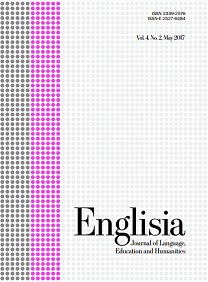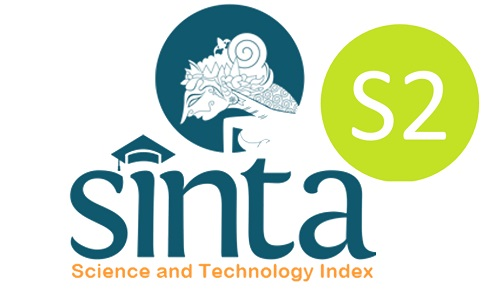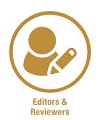Easing the rules of health protocols: A critical discourse analysis of Indonesian president’s speech on Covid-19 handling in 2022
DOI:
https://doi.org/10.22373/ej.v10i1.13755Keywords:
Health Protocols, President of Indonesia, Covid-19, Critical Discourse Analysis, Good New for Covid-19Abstract
The president is the icon of the number one person in a country, and the position of president is the highest position that allows him to always communicate with the public, namely making public speeches. The understanding of the listeners or the public towards the speech delivered by the president allows misunderstandings to arise in interpreting the meaning it contains, both implied and expressed. Therefore, it is very necessary to have a critical discourse analysis of what the president conveys in general. For this reason, the purpose of this research is to analyze the macro structure, superstructure, and micro structure contained in the text of the president's speech, as well as to reveal the implied intent of the president who put forward a statement in relation to action, context, history, power, and ideology. In addition, because the essence of the research is to describe in detail, the method used is qualitative with the principle of critical discourse analysis from Van Djik. Furthermore, the speech delivered by President Joko Widodo, which was delivered online on the metrotvnews youtube channel on May 19, 2022, was used as the object of this research. By applying the techniques of documentation, observation, systematic recording, literature study and listening to the data and research objects, the results show that the researcher found three dimensions of critical discourse analysis in speech texts, namely macro structure, supra structure, and micro structure. The characteristics of critical discourse analysis found in news texts are action, context, history, power, and ideology. In addition, five implied intentions were also found in the video that was shown onlineDownloads
References
Agustina, L. (2017). Pemikiran Presiden Joko Widodo Dalam Pidato Sambutan (Thought the President Joko Widodo in a Greeting Speech). Jurnal Bahasa, Sastra Dan Pembelajarannya (JBSP), 7(1), 80–94.
Aini, N., & Widodo, P. (2018). Critical Discourse Analysis of the Bombing Attack News: An Analysis of Teun A. van Dijk’s Model. Advances in Social Science, Education and Humanities Research, 165, 226–230.
Arikunto, S. (2006). Manajemen Penelitian. Jakarta: Rhineka Cipta.
Bhakti, W. P., & Kumala, N. (2019). Analisis wacana Teun A. Van Dijk terhadap pesan komunikasi dakwah Habib Luthfi Bin Yahya tentang bela negara. JOUR. Jurnal Ilmu Dakwah, 39(1), 15–31.
Dezhkameha, A., Layegh, N., & Hadidi, Y. (2021). A Critical Discourse Analysis of Covid-19 in Iranian and American Newspapers. GEMA Online: Journal of Language Studies, 21(3), 231–244. https://doi.org/10.17576/gema-2021-2103-13
Dijk, T. A. van. (2005). The Handbook of Discourse Analysis. Blackwell Publishers Ltd. https://doi.org/10.1002/9780470753460
Emzir, N., & Lustyantie, N. (2018). President Joko Widodo’s Rhetorical Technique of Arguing in the Presidential Speeches of the Reform Era. International Journal of Applied Linguistics and English Literature, 7(5), 119. https://doi.org/:10.7575/aiac.ijalel.v.7n.5p.117
Ferlien, Y., & Rumaf, N. (2020). Analisis Pidato Prabowo Subianto dalam Prespektif Analsis Wacana Kritis. Jurnal Frasa: Jurnal Keilmuan Bahasa, Sastra, Dan Pengajarannya, 1(2), 100–120.
Hidayat, R. (2022). Critical Discourse Analysis Pairing Jokowi-Prabowo in Online Media Tribunnews.com. Budapest International Research and Critics Institute (BIRCI-Journal): Humanities and Social Sciences, 5(1), 1077-1087. https://doi.org/10.33258/birci.v5i1.3709
Humaira, H. W. (2018). Analisis Wacana Kritis (AWK) Model Teun A. Van Dijk Pada Pemberitaan Surat Kabar Republika. Literasi: Jurnal Bahasa Dan Sastra Indonesia Serta Pembelajarannya, 2(1), 32–40. https://doi.org/10.25157/literasi.v2i1.951
Ismail, S. (2008). Analisis Wacana Kritis : Alternatif Menganalisis Wacana. Jurnal Bahasa Unimed, (69). https://doi.org/10.24114/bhs.v0i69TH%20XXXV.2430
Mulyana. (2005). Kajian Wacana. Yogyakarta: Tiara Wacana.
Musyafa’ah, N. (2017). Analisis Wacana Kritis Model Teun A. Van Dijk “Siswa Berprestasi Jadi Pembunuh.” MODELING: Jurnal Program Studi PGMI, 4(2), 203–211.
Payuyasa, I. N. (2017). Analisis Wacana Kritis Model Van Dijk Dalam Program Acara Mata Najwa Di Metro Tv. Egara Widya : Jurnal Hasil Penelitian Dan Pengabdian Masyarakat, 5. https://doi.org/10.31091/sw.v5i0.188
Pratiwi, V. U., Nofrahadi, N., Pendri, A., Komalasari, D., & Sumarlam, S. (2020). News Text on Kompas.com Media of Covid-19 and the Underlying Conspiracy Theory: A Teun Van Dijk’s Critical Discourse Analysis. Budapest International Research and Critics Institute (BIRCI-Journal): Humanities and Social Sciences, 3(4), 3894–3903. https://doi.org/10.33258/birci.v3i4.1455
Rahardi, H. R., Indrayani, L. M., & Soemantri, Y. S. (2020). Jokowi and Prabowo’s Image in Online News Articles: A Critical Discourse Analysis. In Proceedings of the International Conference on Education, Language and Society (ICELS ), 203–209. https://doi.org/10.5220/0008996502030209
Ramadhan, S. G., & Assidik, G. K. (2022). Analisiss Wacana Kritis Model Teun A. Van Djik pada Pidato Menteri Pendidikan dan Kebudayaan dalam Rangka Hari Pendidikan Nasional 2020. Jurnal Onoma: Pendidikan, Bahasa Dan Sastra, 8(1), 22–39.
Sahmeni, E., & Afifah, N. (2019). Using Critical Discourse Analysis (CDA) in Media Discourse Studies: Unmask the Mass Media. REILA: Journal of Research and Innovation in Language, 1(2), 39–45. https://doi.org/10.31849/reila.v1i2.2764
Santoso, D., & Wardani, A. D. K. (2021). A critical discourse analysis on Jokowi and Prabowo’s tweets during 2019 presidential election. International Journal of Communication and Society, 3(2), 120–129. https://doi.org/10.31763/ijcs.v3i2.379
Syawaludin, M. (2019a). Analisis Wacana Kritis dalam Kumpulan Pidato Presiden Republik Indoensia Ke-7 Ir. Joko Widodo. Jurnal Pembelajaran Bahasa Dan Sastra Indonesia, 9(1), 1–13.
Syawaludin, M. (2019b). Analisis Wacana Kritis Dalam Kumpulan Pidato Presiden Republik Indonesia Ke-7 Ir. Joko Widodo. PEMBAHSI Jurnal Pembelajaran Bahasa Dan Sastra Indonesia, 9(1).
Tamrin, A. (2019). Analisis Wacana Kritis Teun A. Van Djik Terhadap Pidato Gubernur Anies Baswedan Tentang Ungkapan Kata “Pribumi.” Al-Munzir, 12(2), 301–320.
Wiharja, I. A. (2019). Suara Miring Konten YouTube Channel Deddy Corbuzier di Era Society (Analisis Wacana Kritis). Prosiding Seminar Nasional Bulan Bahasa (Semiba), 223–229.
Yanti, N. P. D. E., Putrayasa, I. B., & Artika, I. W. (2019). Analisis Wacana Kritis Teun A. Van Dijk pada Teks Pidato Klaim Kemenangan Pilpres 2019. Jurnal Imiah Pendidikan Dan Pembelajaran, 3(2), 356–362. https://doi.org/10.23887/jipp.v3i3.21846
Downloads
Published
Issue
Section
License
Proposed Policy for Journals That Offer Open Access
Authors who publish with Englisia journal agree to the following terms:
- Authors retain copyright and grant the journal right of first publication with the work simultaneously licensed under a Creative Commons Attribution License that allows others to share the work with an acknowledgement of the work's authorship and initial publication in this journal.
- Authors are able to enter into separate, additional contractual arrangements for the non-exclusive distribution of the journal's published version of the work (e.g., post it to an institutional repository or publish it in a book), with an acknowledgement of its initial publication in this journal.
- Authors are permitted and encouraged to post their work online (e.g., in institutional repositories or on their website) prior to and during the submission process, as it can lead to productive exchanges, as well as earlier and greater citation of published work (See The Effect of Open Access).









